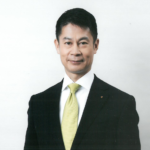Hiroshima Report 2023Column 1 The “Hiroshima Action Plan” and the Significance of the G7 Hiroshima Summit
Yoshizane Ishii
As the only country to have suffered the wartime use of nuclear weapons, Japan has the responsibility to lead the international community’s efforts to realize a “world without nuclear weapons.” The Japanese government has made various efforts to achieve this goal in practical and realistic way.
The path towards a “world without nuclear weapons” has proven increasingly challenging amid the recent division of the international community over nuclear disarmament, further exacerbated by the threat of nuclear weapons by Russia in its aggression against Ukraine, and serious concern among the international community that the scourge of use of nuclear weapon might be repeated.
As a Prime Minister hailing from Hiroshima, Prime Minister Kishida attended the 10th Review Conference of the Nuclear Non-Proliferation Treaty (NPT) held in New York in August 2022, driven by a strong sense of urgency, which made him the first Japanese Prime Minister to attend the conference. In his General Debate speech on the first day of the conference, he called for promoting “Hiroshima Action Plan” as the first step of realistic roadmap to bring the “reality” of the harsh security environment to the“ideal” of a “world without nuclear weapons.” The plan is rooted in the following five actions, while simultaneously reducing nuclear risks: 1) sharing the recognition on the importance of continuing the record of non-use of nuclear weapons, 2) enhancing transparency, 3) maintaining the trend of the reduction of global nuclear stockpile, 4) securing nuclear non-proliferation and promoting the peaceful uses of nuclear energy, and 5) encouraging visits by international leaders and others to Hiroshima and Nagasaki.
Subsequently, the Japanese government took a series of actions aimed at materializing the plan. In September 2022, Prime Minister Kishida co-chaired the High-Level Meeting of the Friends of the Comprehensive Nuclear Test Ban Treaty (CTBT), which was held at the leaders level for the first time, and stressed the importance of the universalization of the CTBT and its early entry-into-force, as well as the strengthening of the verification system. In October, a draft resolution on the elimination of nuclear weapons was submitted to the United Nations, calling for the importance of continued record of non-use of nuclear weapons, enhancing transparency as well as disarmament and non-proliferation education that fosters the accurate understanding on the realities of nuclear weapons use. The resolution was adopted in the plenary meeting of the UN General Assembly in December with the support of 147 countries including nuclear-weapon States such as the United States of America, the United Kingdom, and France, as well as many non-nuclear-weapon States. In the same month, the first meeting of the International Group of Eminent Persons for a World without Nuclear Weapons was held in Hiroshima, with the attendance of Prime Minister Kishida. At this meeting, strong messages were delivered by political leaders including former U.S. President Barack Obama, and frank and candid discussions were held among members from both nuclear-weapon States and non-nuclear-weapon States, making the meeting an important step forward in building international momentum toward a “world without nuclear weapons.”
Sharing the realities of the atomic bombings to the world is vital as the starting point for all initiatives toward nuclear disarmament, and this is therefore positioned as one of the pillars of the “Hiroshima Action Plan.” At the 10th NPT Review Conference, Prime Minister Kishida announced the establishment of the “Youth Leader Fund for a world without nuclear weapons” by contributing $10 million to the UN with the aim of inviting future leaders to Japan and providing them with opportunities to learn firsthand the realities of the nuclear weapon use, which will create a global network among the youth towards the elimination of nuclear weapons.
The G7 Hiroshima Summit will be held in May 2023. It would be important to make the Summit an opportunity for G7 leaders to visit an atomic bombing site and send a strong message to the world from Hiroshima, with historical significance, that the very fact that no nuclear weapons have been used for the past 77 years since the atomic bombings of Hiroshima and Nagasaki must not be disregarded. Furthermore, the Japanese government is determined to firmly lead the discussions at the G7 Summit on nuclear disarmament and non-proliferation, and continue to take practical and realistic steps in line with the “Hiroshima Action Plan.”
Yoshizane Ishii: Director, Arms Control and Disarmament Division, Disarmament, Non-proliferation and Science Department, Ministry of Foreign Affairs of Japan








